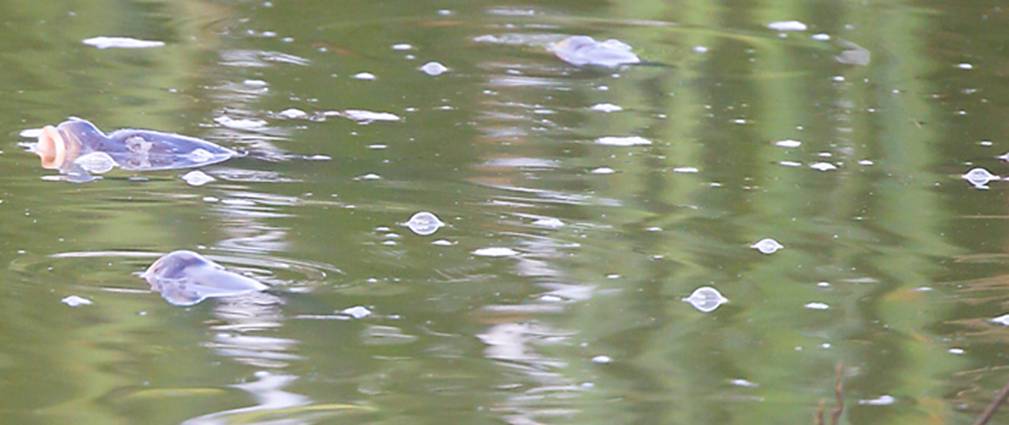Carp can tolerate low oxygen
levels but when it gets very low they carp gulp water
on the surface where the oxygen level is higher as the
oxygen is absorbed by the water.
Peter
from:
Margaret Leggoe [m("gmail.com","m.leggoe7141");">]
Sent: Monday, 18 February 2013 7:57 PM
To: 'Julian Robinson'; 'canberrabirds chatline'
Subject: RE: [canberrabirds] What might this
be? (Slightly bird related)
When Kelly’s was
becoming a tad slimy and the carp were gasping their
last, large water bubbles remained on the surface for
quite a few seconds before disappearing.
Margaret.

On the smallest of
Callum Brae’s dams was a nesting Australasian Grebe.
As I was photographing it close to its nest, quite
suddenly the 5 to 7 bumps shown in the photos appeared
nearby. They/it didn’t appear like bubbles, seemed
solid, all the same size and didn’t burst or
disintegrate like bubbles. They appeared to be parts
of one thing, like the Lock Ness monster. The Grebe
turned to look at this thing and by 7 seconds later
it/they disappeared, though I didn’t see in what
manner.
Does anyone have
any idea what it/they could be? The pale thing in the
foreground is a leaf.
Julian
Sequence below…
Photo 1 @ 0 secs
(no blobs)
2 @ 1 second
(blobs appear, all together, with wave-rings radiating
outwards)
3 @ 2 seconds
(bird turns to look at blobs)
4 @ 7 secs (blobs
gone)

